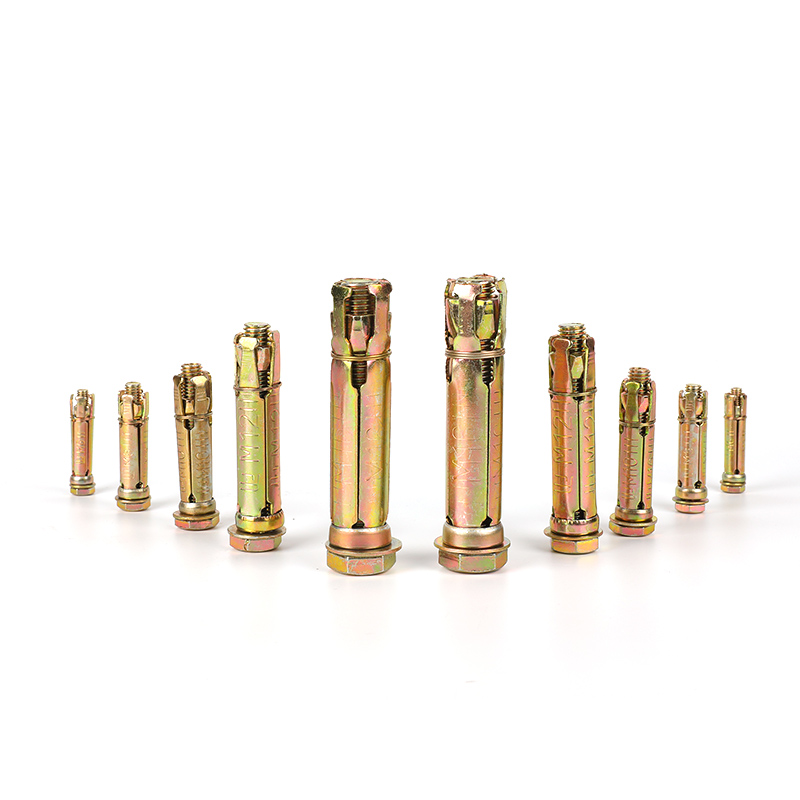Room 102, Building 13, Area A, Wanyang Zhongchuang Park, Ganyao Town, Jiashan County, Zhejiang China.

The tightening sequence and tightening method of Fix Bolts And Flange Bolts have a crucial impact on the sealing performance of flange connections. If the tightening sequence or method is improper, it may lead to uneven stress on the flange surface, uneven gasket compression, and even leakage. The following is a detailed analysis and suggestions:
1. The importance of tightening sequence
The tightening sequence determines whether the stress distribution on the flange surface is uniform. If the tightening sequence is unreasonable, the following problems may occur:
Flange surface deformation: excessive stress in local areas causes flange warping or deformation.
Uneven gasket compression: gaskets in some areas may be over-compressed, while other areas are under-compressed, thereby reducing sealing performance.
Increased leakage risk: due to uneven stress distribution, flange connections are more prone to leakage under working conditions.
Recommended tightening sequence
Cross method: This is the most common tightening sequence, especially for round flanges. Starting from the center of the flange, tighten the bolts in a diagonal direction to ensure that the flange surface is evenly stressed. For example, for a flange with 8 bolts, you can tighten in the following order: 1 → 5 → 3 → 7 → 2 → 6 → 4 → 8.
Gradual tightening in stages: Tightening is usually completed in three stages:
Preliminary tightening (reaching 30%-50% of the target torque): ensure that all bolts are evenly in contact with the flange surface.
Intermediate tightening (reaching 70%-80% of the target torque): further balance the stress distribution.
Final tightening (reaching 100% of the target torque): ensure that the flange surface is completely in contact and the gasket is evenly compressed.
2. Influence of tightening method
The choice of tightening method directly affects the size and uniformity of the preload, which in turn affects the sealing performance. The following are common tightening methods and their characteristics:
(1) Manual torque wrench tightening
Advantages: low cost, simple operation, suitable for small and medium-sized flanges.
Disadvantages: dependent on the operator's experience and technical level, prone to inconsistent preload due to human error.
Improvement suggestions: use a high-precision torque wrench with torque value display, and operate strictly in accordance with the specified torque value.
(2) Hydraulic tensioner tightening
Advantages: provides accurate preload, suitable for high pressure, high temperature or critical occasions.
Disadvantages: Expensive equipment, complicated operation, mainly suitable for large flanges.
Application scenarios: Nuclear power plants, petrochemicals and other fields with extremely high requirements for sealing performance.
(3) Multi-synchronous hydraulic wrench tightening
Advantages: Tightening multiple bolts at the same time to ensure uniform force on the flange surface and reduce the risk of deformation.
Disadvantages: High equipment cost and requires a professional team to operate.
Application scenarios: Large pipeline flanges or ultra-high pressure conditions.
(4) Impact wrench tightening
Advantages: High efficiency and suitable for quick installation.
Disadvantages: Difficult to control the preload force, which can easily lead to uneven stress on the flange surface.
Notes: Only suitable for occasions with low requirements for sealing performance, and subsequent inspection and adjustment are required.
3. Relationship between gaskets and tightening
Gasket type and material also have an important impact on the tightening sequence and method:
Soft gaskets (such as rubber gaskets): Easy to compress, with low requirements for tightening force, but it is necessary to avoid excessive preload to cause gasket damage.
Hard gaskets (such as metal spiral wound gaskets): require a higher preload force, and uniform compression must be ensured during tightening.
Non-metallic gaskets (such as graphite gaskets): are very sensitive to the tightening sequence and method, and are prone to leakage due to uneven force.
4. Influence of working environment
Different working environments put forward additional requirements for the tightening sequence and method:
High temperature environment: thermal expansion may cause the bolts to loosen, so a higher initial preload force is required and regular re-inspection is required.
Low temperature environment: the cold shrinkage effect may cause the flange surface gap to increase, and it is necessary to select a suitable gasket material and optimize the tightening sequence.
Vibration environment: anti-loosening devices (such as spring washers or lock nuts) are required after tightening to prevent the bolts from loosening.
Through scientific tightening sequence and methods, the sealing performance of flange connections can be effectively improved, the risk of leakage can be reduced, and the service life of equipment can be extended.

Fix anchorbolts include bolts, washers, nuts and 4PCS cylindrical shields. By tightening the bolts, the shields tubes expand and the components can be...
See Details
Flange bolts are specially used to tightly connect pipes and components with flanges. We produce flange bolts are solid t and durablethat, compling wi...
See Details
The Grade 8.8 black oxide full-thread hexagon socket bolts have an internal hex design and needs to be used with a wrench with a hex head. Its full th...
See Details
Grade 8.8 black oxide full-thread hexagon bolts is a very common fastener and requires a wrench or hex wrench to tighten it. Our hex head bolt meet th...
See Details
This product is made of high-quality carbon steel and undergoes a rigorous heat treatment process. It has high strength, good elasticity and toughness...
See Details
This 304 stainless steel plain full-thread hexagon bolt is a kind of fasteners made of high-quality stainless steel material and has corrosion resista...
See Details
This plain round flat head weld shoulder bolt is a fastener suitable for a variety of welding applications. Its flat head and round head design makes ...
See Details
This Grade 12.9 zinc plated countersunk head square neck plow bolt has the advantages of high precision, high operability, high strength, and high ten...
See Details